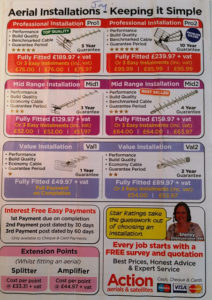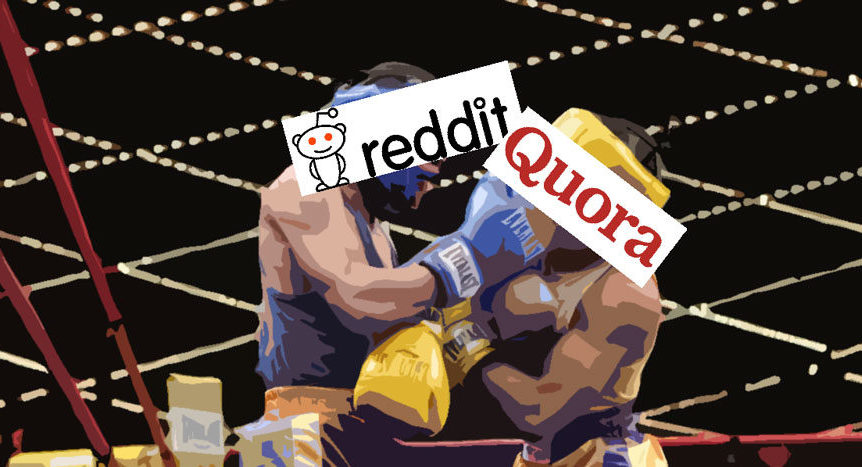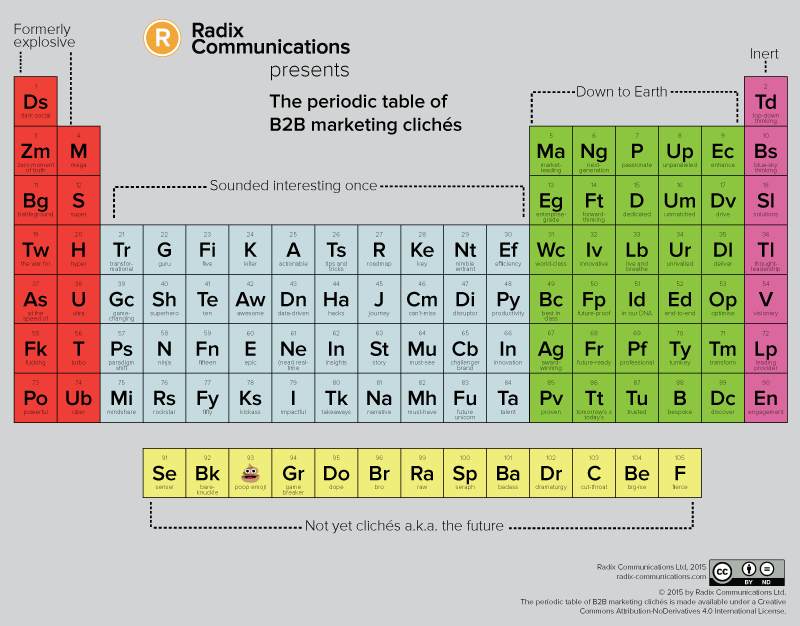I once named Sharon Flaherty, MD of BrandContent, as one of my top UK content marketing influencers, but it wasn’t because she was creating bold, creative, out-there content.
(Although she was certainly doing that.)
It was because she was saying something other content marketers weren’t: that boring content is OK too.
“One of our most consistently popular [pieces of] content over the past two years has been our guide to the no claims bonus. That informational item is helpful and it gets lots of views but it isn’t entertaining.”
– Sharon Flaherty, confused.com, quoted in Marketing Week (PDF), March 2013
Boring content doesn’t get much of a look-in in those lists of inspiring content marketing campaigns. Jean Claude Van Damme bestriding a couple of Volvo trucks is always going to get more buzz than a no-claims bonus guide. But that doesn’t mean that every piece of content you create has to be a lavish narrative epic with Hollywood production values – and a Hollywood budget to match.
Epic Split: not boring
It doesn’t even have to have a story.
We’ve fallen out of love with boring content
Boring content has had an extraordinarily bad rap lately, as B2B marketers have collectively sworn off fusty white papers and unimaginative product brochures, and swanned off to create lavish animations, witty social memes, quirky SlideShares and mind-blowing parallax scrolling sites.
And that’s great – I’m still hugely excited and inspired by the explosion in creativity that’s been going on in B2B over the past few years. And I love writing copy for all those things I just mentioned.
But at the same time, hello – eventually your potential buyer will tire of your Facebook puzzles and ironic colouring books, and will need some practical help to decide what they should actually buy. They need content for the rest of the funnel.
And that’s where boring content comes in.
What is boring content?
Boring content is content that’s not flashy, nor attention-grabbing, nor fun, nor quirky. It doesn’t aspire to pluck the buyer’s heartstrings, or win Best Use of Creative at the B2B Marketing Awards.
Boring content is content that is matter of fact and useful. And here’s why you need it.
In the parlance, boring content lives at the bottom of the funnel (with the lampreys and eels), where it serves an immensely important purpose: to help people decide what to buy.
Its aim is to get prospects over the final hurdle – the decision to purchase – and convert them from vacillating ‘maybes’ to proper, qualified, sales-ready leads.
And when people are in that bottom-of-funnel mood, where they’ve just about made up their minds they’re going to purchase something, what they don’t really want is another cute animation.
They want no-frills facts that outline exactly what they get for their money, how you’re going to deliver it, what else might work well alongside it, and why it’s better than that similar thing your competitor is offering.
Let me show you an example.
I’ve been oddly mesmerised by this leaflet, ever since it was thrust into my husband’s hand by a passing TV engineer. It’s such a good example of boring content it could almost be the archetype.
Feast your eyes upon it:

Yes, it’s an A5-sized guide to TV aerial installation services. And it breaks just about every rule of what we in B2B – not to mention everyone in B2C – might consider ‘quality’ content:
No graphic designer has been anywhere near it. Look at it. No gorgeous photography, no fancy graphics, no white space anywhere. Every designer I know would weep at the mere sight of it. One or two might even faint at the sight of the font they’ve used for Shirley’s speech bubble.
It’s text-heavy, yet its copy is untroubled by the stylings of a creative copywriter.
It makes little attempt to establish personal rapport, sometimes going so far as to refer to the reader simply as ‘Customer’. “Customer is required to provide all cables and connectors.”
It’s jam-packed with passive voice, something we copywriters have trained ourselves to avoid, for fear of seeming vague, fusty and/or impersonal.
“When the signal is strong it is possible to fit a splitter, otherwise an amplifier is recommended.”
There’s no story; no emotional journey, no sympathetic protagonist (unless we count K. Haffey, the mysterious customer quoted on the back page), no carefully crafted three-act structure featuring tension, conflict and resolution.
And yet… and yet… and yet…
I’m convinced this aerial installation guide is a work of content genius. Here’s why:
It’s useful and informative. Most of us would profess not to know much about TV aerial installation. This leaflet packs everything you could ever possibly need to know into a compact piece of folded A4. After reading it, you feel completely qualified to assess your own needs and make the right decision.
It makes incredibly economical use of copy to get nothing but essential information across. There’s no fancy copywriting here; no analogy, no metaphor, no jaunty asides, no witty wordplay – just basic facts.
It anticipates and answers customer questions in a matter of fact way, never patronising the reader. Witness how “Our installers can secure your TV to the wall; they carry a range of brackets and fixings as standard” deftly anticipates and answers two questions in one sentence.
In fact I think it answers every single question I could ever imagine having about TV aerial installation, from “Which one do I need?” to “Can you fit a DAB radio aerial at the same time?” to “How can I get my massive telly fixed to the wall?”
Its tone is down to earth, matter of fact, genuine and honest – and that says something to me about the trustworthiness of the company.
(In my darker days, I sometimes feel that hiring a professional copywriter is actually a bad thing; that if you want to communicate in an honest, authentic way with your audience, you should just communicate with them – even if what you write is littered with awkward phrases and frowned-upon grammatical constructions. “Bad” writing can also be authentic writing, and silver-tongued copywriters can sometimes get in the way of that authenticity. But I’ll save that for a post on Why Bad Content Isn’t Bad Content.)
And for me, the most impressive thing about this leaflet is:
It makes it very easy to choose which product you need: using colours, a star system, pricing, naming and a couple of jaunty banners to differentiate each one clearly from the others. You almost can’t help but decide to buy something, just because it makes the decision so easy.
And that’s the thing about the bottom of the funnel, whether you’re selling aerial installations or project management software or public cloud infrastructure. You’ve got to make it easy for people to decide. And that means your content has to be clear. It has to be factual. It has to present every option, and clearly indicate the merits of each one. It has to answer niggly questions. It has to get straight to the point.
Essentially, it has to be boring.
So don’t ditch your boring content – your white papers, your datasheets, your brochures and ticklists. You need them. Your customers need them. They help you sell and they help your customers buy. And for all the glitzy videos and stylish SlideShares you sprinkle around the top of the funnel, that’s fundamentally what successful marketing is all about.



